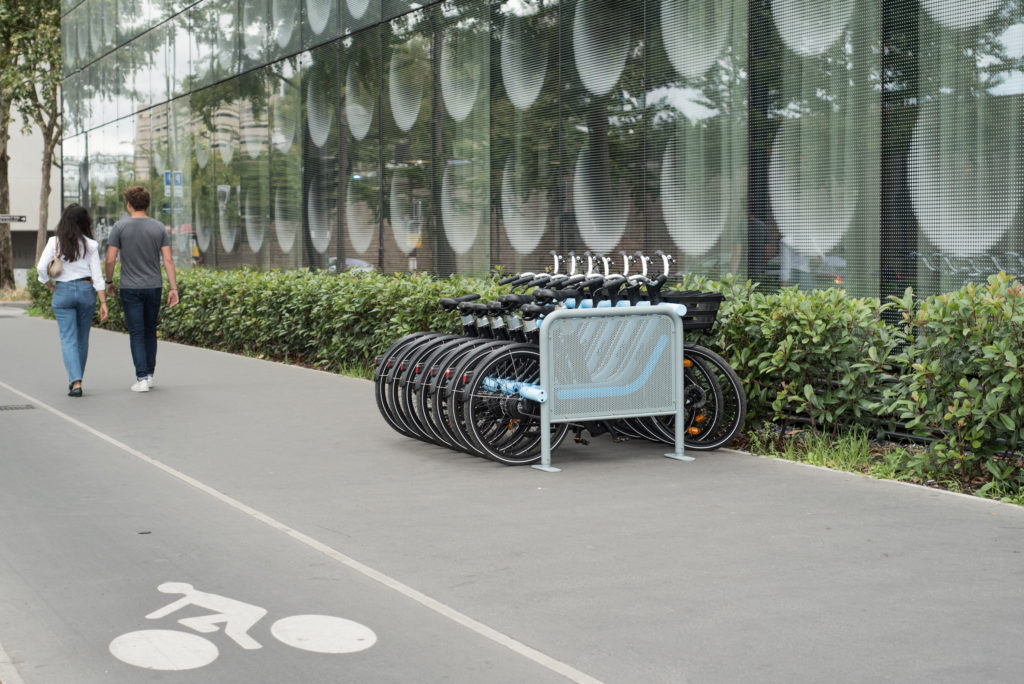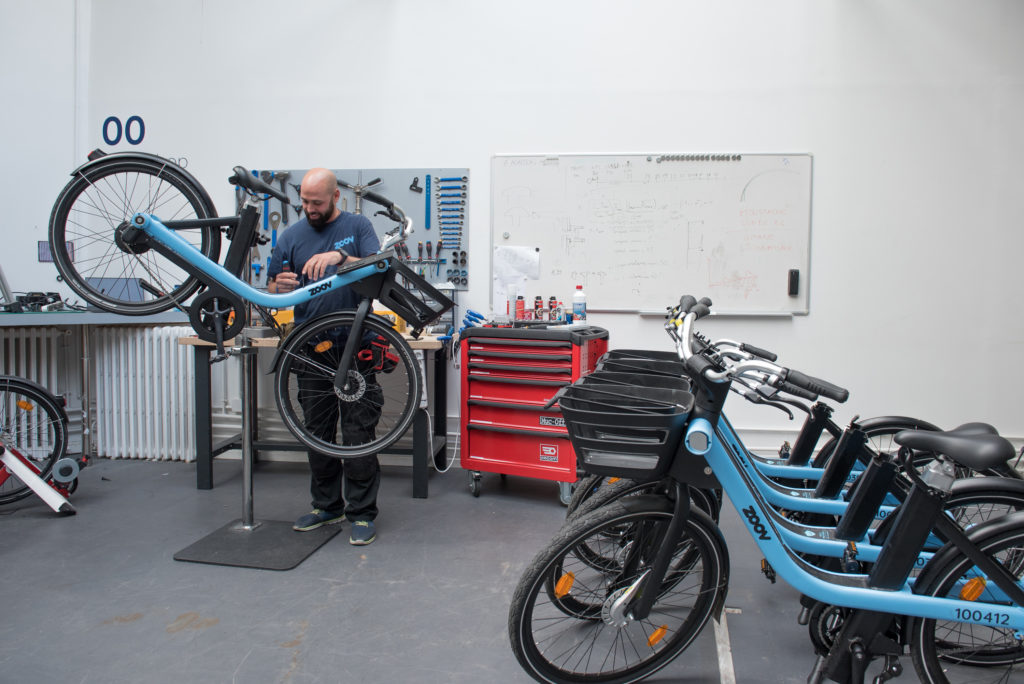Technology
Zoov, a disruptive bike-share solution
26 November, 2019
As I am often writing, I see the future of bike-share as a hybrid between dock-based and dockless solutions and including e-bikes, to allow the coverage of wider territories with different usage patterns. Such solutions remain rare and are still handicapped by the stations’ costs and implementation constraints.
With its CEO and founder Arnaud Le Rodallec, I visited the Paris-based start-up Zoov which is developing an innovative solution to try to answer this equation.
A short and dense history
Zoov has been created in June 2017 by Amira Haberah, Arnaud Le Rodallec and Eric Carreel, all coming from the IoT sector through Eric’s companies Withings –once the property of Nokia – and Invoxia – which launched one of the first devices to use Amazon’s Alexa.

Their interest in mobility combined with their sound knowledge in IoT led Eric and Arnaud to work on a bike-share solution project, that Amira soon joined to help on the commercial side. The team goals are to develop an innovative compact, secured solution while betting on a full in-house development to respect the tryptic product/service/data: mastering the product, adding a service that generates data, using those data to improve the product and service.
Two and a half years after its creation, Zoov now employs 36 people at the HQ, and managed to launch two projects:
- The first launched as a beta test in Paris-Saclay conurbation committee in January 2019 with a V1-bike with a bring-your-own-battery (BYOB) feature. It evolved to a public service with integrated batteries in September 2019. 80 e-bikes and 15 stations are in operation.
- The second is a free-floating service available in Métropole de Bordeaux since September 2019 where 120 e-bikes are available.
Both projects will expand by the end of January 2020 to 450 e-bikes in Saclay and 500 in Bordeaux, along with possible new launches in French metropolis – the company is not yet looking to go abroad.

Working with a hybrid solution allows Zoov not to be only reliant on public funds to develop its projects, needed by others heavier infrastructure, but to offer its station as insurance for an optimized availability for those ready to pay 5000€/year for “their” station.
Mastering the whole solution
As written above, Zoov’s DNA is to master any piece of its solution. The size of the R&D team – a dozen engineers on the hardware, same on the software – is impressive, and a proof that it is not marketing words!
Zoov’s e-bike development started back in 2017, with the frame design, which is the heart of the solution as the locking and charging device. The bikes are indeed locked one to the next through two magnetic anchorings allowing to absorb positioning and rotation gaps. If the locking mechanism is operational since 2018, the energy transfer through these very same anchorings has just been released, as optimising the energy transfers required longer development not to damage the battery.

As the IoT and energy transfer circuit board manage transfers between two bikes, bike and station, and even two batteries, the bikes can be used with light BYOBatteries and/or integrated ones with a 345Wh capacity to feed the rear hub 250W motor. The use of a BYOB could be incentivised by offering discounts to the user in exchange of energy supply to the service. The motor is currently used as motor-braking, saving the costs of a smart-lock, and should allow regenerative charging after further development.
The station is the last piece of the solution still to be developed, as it is still to be electrified. It shouldn’t be an insurmountable job, as it mainly consists of adapting the energy management system to the electric network, instead of a battery. And as a reminder, the energy management circuit board and software are home-made!
The weakest link management
Like any innovation, it comes with its weak point: as the bike parking creates a chain of e-bikes, how to deal with a non-functional link/bike? The inter-bike energy transfer answers the question on the charging side, as “an uncharged bike can recharge to gain up to 5 kilometres every 10 minutes through one of its neighbouring bikes“. On the maintenance side, Zoov relies on both the users’ declarations through the app and the data from the embedded sensors and IoT devices to be able to identify and move the non-functional bikes. If the first bike available is still out of order, a user process in the app allows to declare it as such, move it to a dedicated zone close to the station, and pick the second bike. Zoov’s goal is to approach zero probability for the second bike to be out of order.

To enter the very competitive market of shared micromobility, Zoov chose a different way from most operators: mastering its whole solution, to make it robust and evolutive. It is a long way to go for a start-up, with big investments to cover the development costs… but here is the result : a great bike, an intuitive user process. With the capacity to take into account the operational feedback, and a will to get a fully accomplished product, it makes no doubt that Zoov’s product has a nice future in the bike-share world.
Its capacity to remain alive will rely on building a sustainable business model. With a hybrid solution (stations plus free-floating), the double battery (BYOB and integrated), the smart R&D team should find innovative solutions to make it work !
Thanks for the great article. It is really helpful. Meanwhile, I was looking to buy “Raptor 3-Wheel”,Can you please help me out?
https://valuplusmedicalsupply.com/product-category/power-scooters-power-wheelchairs/